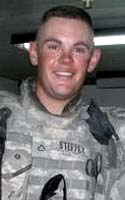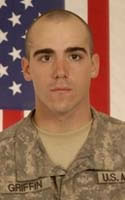Harry Alexander McKie, age 20, from Chippewa County Sault Saint Marie, Michigan .
Parents: Hazel M. McKie
Service era: Korea
Date of death: Saturday, November 25, 1950
Death details: By mid-November 1950, U.S. and Allied forces had advanced to within approximately sixty miles of the Yalu River, the border between North Korea and China. On November 25, approximately 300,000 Chinese Communist Forces (CCF) “volunteers” suddenly and fiercely counterattacked after crossing the Yalu. The 2nd Infantry Division, located the farthest north of units at the Chongchon River, could not halt the CCF advance and was ordered to withdraw to defensive positions at Sunchon in the South Pyongan province of North Korea. As the division pulled back from Kunu-ri toward Sunchon, it conducted an intense rearguard action while fighting to break through well-defended roadblocks set up by CCF infiltrators. The withdrawal was not complete until December 1, and the 2nd Infantry Division suffered extremely heavy casualties in the process. Corporal Harry Alexander McKie, who joined the U.S. Army from Michigan, served with B Company, 2nd Engineer Combat Battalion, 2nd Infantry Division. He went missing in action during his unit’s withdrawal from Kunu-ri to Sunchon. No one saw him fall, and his body was not recovered during or immediately after the battle. He was not reported to be a prisoner of war, and his remains have not been identified among any returned to U.S. custody after the cease fire. Today, Corporal McKie is memorialized on the Courts of the Missing at the National Memorial Cemetery of the Pacific.
Source: National Archives, Defense POW/MIA Accounting Agency, Lansing State Journal (1951)

